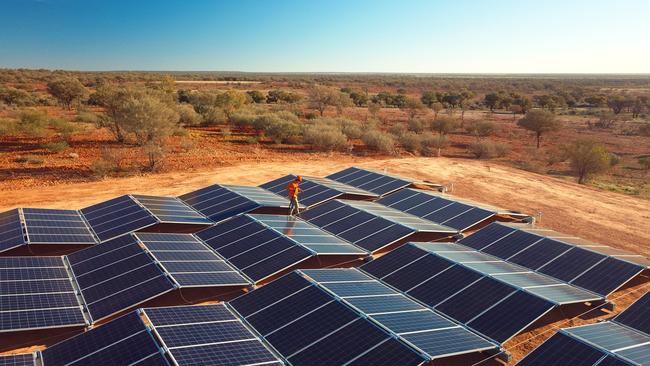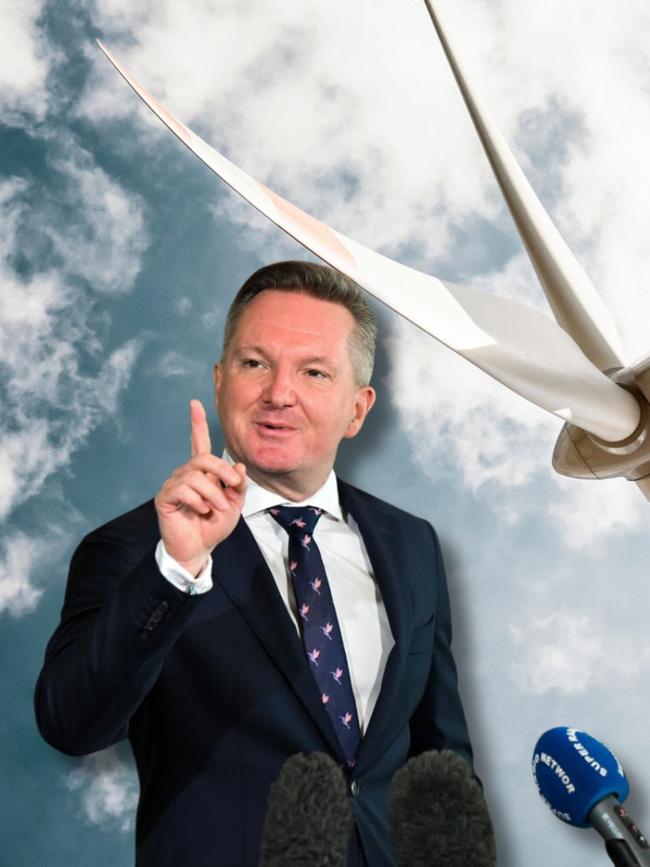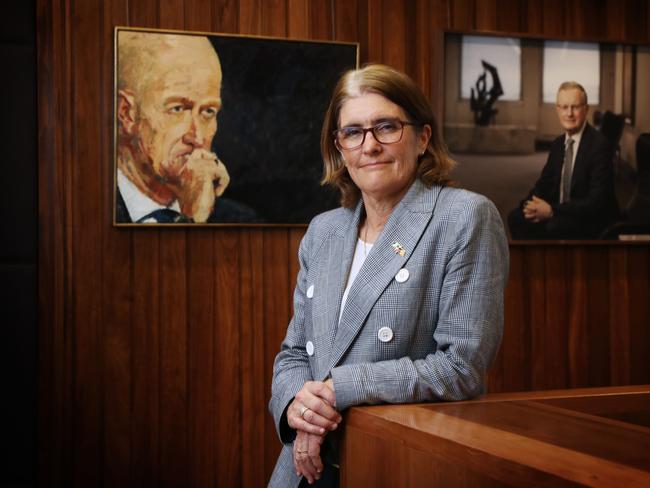Race to zero: How Australia is transforming energy infrastructure in response to climate change
Australia is undergoing its biggest economic and structural shift with the transformation of our energy infrastructure in response to climate change.

Like a lumbering jet airliner, Australia’s energy transition is rumbling down the runway towards a future that is far from certain. In 2023 there is widespread anxiety that lift-off won’t be achieved before the coal plants on which our low-cost energy prosperity has been built are shut. The race is on for government to finish building the runway – the transmission lines that are needed to connect wind and solar projects to the electricity grid – before the transition crashes and burns. Without these links, business is baulking at spending the billions of dollars necessary to meet the increasingly ambitious targets that are being set along the way to a bipartisan commitment for Net Zero by 2050.
This is a defining moment for the nation. How we manage the challenges that are starting to wear down governments around the world will determine more than just what happens when the light switch is flicked at homes around the nation. Industry cannot work without power. Our exports are dominated by the energy products the world says it will no longer want in an era defined by climate change, despite evidence to the contrary. Rising electricity costs are a political as well as economic risk. Labor and minor parties have declared the climate wars are over, but they may have claimed victory too soon. If electricity costs continue to rise or power supplies falter, the public might lose patience with Net Zero; there are signs this is happening elsewhere in the world.
‘Western Australia, the Northern Territory and North Queensland (could) become the industrial and energy powerhouse of the nation’
But if the transition takes flight in a way that proponents hope it will, the nature of our exports will shift from natural gas and coal to hydrogen and the types of industry we nurture will be reformed. Mining the metals needed for a green economy is an epoch-defining opportunity for a nation that saw the potential of coal, LNG and iron ore to leverage the Asian super cycle. As this happens, the economic centre of gravity will shift inexorably north where large undeveloped swathes of Western Australia, the Northern Territory and North Queensland become the industrial and energy powerhouse of the nation. A view into the distant future by academic think tank Net Zero Australia shows the electricity infrastructure that presents today’s challenge for policy makers will be dwarfed by what is likely to happen in the nation’s north. Success in developing low-cost hydrogen would supercharge the deployment of pipelines and wires to transport renewable energy and desalinated water to make the replacement energy product for coal and natural gas. For a sense of scale, if renewables are to become our main domestic and export energy source, wind and solar will need to grow to 40 times the current National Electricity Market capacity.
The next few years will be critical in determining whether this will be Australia’s new reality or a failed dream that misunderstood the financial, technological and political risks involved. Australia is not alone in its desire to be a renewable energy superpower. It is also possible that government has miscalculated the community resistance to the environmental impact of what is being proposed. Just as it may have lost sight of the enduring fact borne out repeatedly in public opinion surveys that community good intentions on climate action do not always extend to paying the bill for it to happen.
Climate Change and Energy Minister Chris Bowen is defiant in the face of adversity. But the fact is government policy designed to provide certainty has not been sufficient to unlock the investment that is needed. The Clean Energy Council has warned that investment in energy generation projects in 2023 was the slowest in the first half of the year since they began tracking project data in 2017.

Meanwhile, the infrastructure that is being built to enable a low emissions grid is taking longer and costing more than anticipated. The budget for the Snowy 2.0 hydroelectric project has ballooned from $2bn to an estimated $20bn amid landholders’ fierce opposition to the transmission line needed to get the power to market through a national park. The cost of an additional power connection from Tasmania to the mainland to enable the island state to become a battery for the nation has blown out beyond the state’s capacity to pay. Plans by state governments to establish renewable energy hubs are being challenged by community resistance. The picture is one of compounding delays and rising costs against a ticking bomb of the closure of coal generation that is still the bedrock of the electricity network. Meanwhile there are growing impediments to gas, the existing source of energy with the most potential to guide the switch to lower emissions as a transitional fuel.
Mr Bowen says the naysayers are wrong. He says the same mindset that led so many to opine with certainty that Australia couldn’t reach a fairly modest target in 2020 has led exactly the same people to assert with even greater certainty that achieving 82 per cent renewables by 2030 is equally impossible.
“Why would we write off our chances of achieving a 2030 target with a federal government that has support for renewable energy as a signature?” Mr Bowen said. “Yes, there are challenges in rolling out transmission infrastructure. But finance was the first hurdle and now we are systematically working through implementation, including strengthening engagement with communities,” he said.
From 2024 onwards the political risk of failure will become more acute. The Albanese government has ridiculed the approach taken by conservative governments from John Howard to Scott Morrison for the rate of progress to be led by the pace of technological evolution. Early favourites including wave power and geothermal power have fallen by the wayside after billions of dollars were spent trying to make them work without success. Solar energy has been a big success with prices falling by orders of magnitude, but the sun still refuses to shine at night. Batteries have become an essential part of the storage equation, but they lack endurance for extended periods of renewable energy drought. Offshore wind is considered to be a natural evolution for Australia, but planning is only beginning and if the overseas experience is any guide there are plenty of environmental and technological issues to be overcome. Perfecting hydrogen is the ace card, but it is still far from certain that low-cost hydrogen for export can be made at scale or that Australia will be able to claim the prize.
The reality is that much of the cost and pace of the transition is beyond the ability of national government to control or manage. The Biden government’s Inflation Reduction Act showcases the geopolitical stakes. As China forges ahead with deployment of coal-fired power for its own industry and energy security, it commands a global dominance in the battery and the electric vehicle supply chain. The Chinese Communist Party has a near monopoly stake in the production of many of the rare earths and minerals needed for the green transition and has shown itself willing to manipulate prices to retain control. The United States is using subsidies to attract manufacturers and sanctions on intellectual property to fight back. The trillions of dollars in subsidy payments on offer in the US has turbocharged global competition for the industries of the future.

Australia has a role to play but is too small to compete. The upshot is likely to be a new era in trade protectionism and an outbreak of green inflation. The new Reserve Bank governor, Michele Bullock, has warned that a global race to decarbonise will lift prices. “To achieve net-zero emissions globally, the International Energy Agency estimates that by 2030 annual investment in clean energy will have to be running at around three times the current pace,” she said. “If realised, this is expected to have some sizeable and possibly volatile effects on overall inflation.”
The Business Council of Australia (BCA) has warned that not acting will have consequences as well. “If we don’t reduce the carbon footprint of our goods and services – both those we consume at home and those we export overseas – the rest of the world will not want to buy from us,” the BCA has said. “At the same time, nearly one in four Australian jobs are in emissions-intensive sectors that will be directly exposed to this disruption – with regional Australia particularly exposed.”
The Albanese government has rolled the dice on a green transition that is still a work in progress. Business and households have been promised a lower cost future as prices continue to rise. The transition will reshape industries and determine future living standards. From a policy of hasten slowly, we have entered a period where everything is on the line.


To join the conversation, please log in. Don't have an account? Register
Join the conversation, you are commenting as Logout